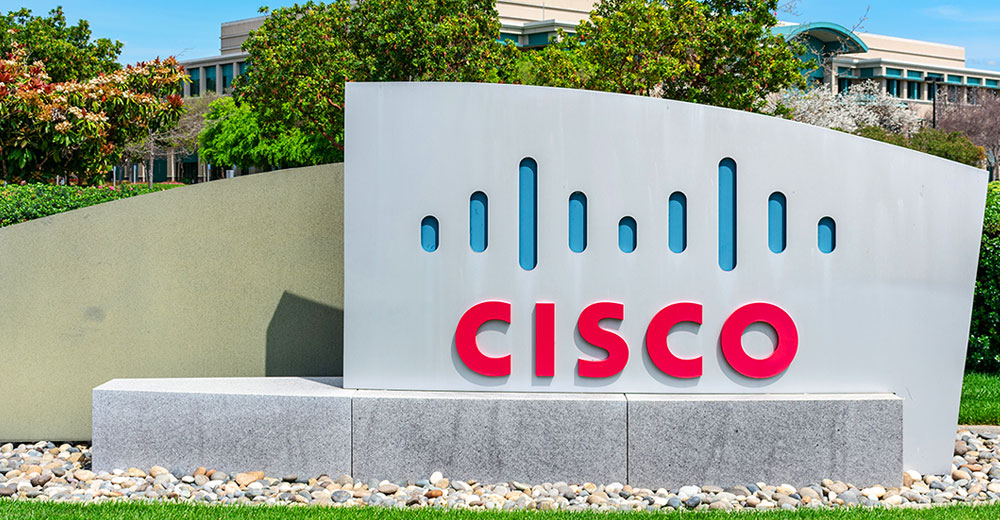A global study of IT business leaders praised the growing merits of open-source software amid concerns that big tech supporters could undermine its open qualities and collaboration.
Perhaps one of the main takeaways is the optimism IT execs (82 percent) feel about the future of open source. But that praise comes with a dire warning. Three-quarters (76 percent) of IT workers cited that the involvement of big tech players in open source could erode confidence and trust in the open-source community.
Open-source infrastructure and application delivery vendor Suse, the company behind one of the oldest Linux distributions, on June 14 released the results of its open-source report. Suse CEO Melissa Di Donato the same day released an open letter to the world’s business leaders seeking their adoption of open source to spur more innovation and productivity.
The Suse study cataloged responses of 800 IT professionals in companies with at least 250 employees across a range of industry sectors. Researchers interviewed respondents in March/April this year.
Key findings from the research indicate that IT leaders (76 percent) are under even more pressure to deliver tangible outcomes for the business than last year. It showed security and remote access infrastructure concerns high on the list of challenges. In fact, non-stop IT and infrastructure have become more important than ever, according to the report.
“It’s no surprise that today’s IT leaders are facing more pressure than ever to deliver outcomes to their respective businesses than in 2020. One of the many findings from our research report showed that the opportunity to overcome these pressures is by simplifying how the business is run. And to do so, many leaders have turned to open source to help accelerate their initiatives,” Brent Schroeder, Global CTO for Suse, told LinuxInsider.
To solve these challenges, Suse’s research shows that IT leaders see an open-source strategy featuring containers, multi-cloud, and edge computing technologies as vital to supporting their priorities, observed Schroeder.
Top Tech Priorities Disclosed
The biggest technology challenges in the last 12 months, Schroeder said the report disclosed, included maintaining security and data access controls (43 percent), demands on remote access infrastructure (34 percent), pressure to reduce operational costs (34 percent), maintaining service availability/performance (33 percent) and reduced IT resource/staffing (33 percent).
“We have also identified that around four in five organizations (79 percent) say they feel like they always need to compromise between lowering costs and achieving better business outcomes,” he said.
The most important tech investment pillar remains to simplify how business leaders run their operations (61 percent), their rate of accelerating change, and scaling the business (51 percent).
Tech approaches seen as important in supporting these investment pillars include multi-cloud strategy (85 percent), high-performance computing (83 percent), 5G/enhanced connectivity (81 percent), DevOps (81 percent), automated AI (81 percent), and edge computing (80 percent).
Schroeder noted that the research revealed key elements about IT leaders’ perceptions of open-source technology. Those include:
- 85 percent agree that open source enables innovation at the edge and is a way to cost-effectively drive innovation in general;
- 78 percent are looking to migrate from proprietary to open-source solutions wherever possible; and
- 30 percent of IT leaders report a lack of open source skills in the market, while 32 percent want to develop their own skills and experience in open source.
Pandemic Challenges
Covid-19 has accelerated or increased tech innovation in 60 percent of organizations. It has continued at the same pace for 32 percent.
As a result, initiatives have been delayed or canceled for eight percent. That outcome led 86 percent to say non-stop IT and infrastructure stability is more important than ever.
“The pandemic undoubtedly had a profound impact across industries worldwide. As business leaders looked to revamp and pivot their strategies, we continued to see more investment as well as a shift in thinking towards a digital-first approach,” noted Schroeder.
“In order to do [that], IT leaders understood they needed to harness the power of technology to overcome challenges brought on by the pandemic,” he added.
Multi-Cloud and Edge Computing Essential
Interest is growing rapidly in multi-cloud and edge computing. A large majority of organizations (69 percent) say they currently have a multi-cloud strategy, and 28 percent are working on this in the next two years.
Key drivers for this strategy include cost-effectiveness (45 percent), increased flexibility and agility (44 percent), improving resilience/minimizing downtime (36 percent), and taking advantage of best-of-breed solutions (35 percent).
A major concern for IT is building cloud competencies and skills in the IT team (55 percent). A clear cloud adoption vision and plan is targeted by 48 percent of respondents. Other target areas are to modernize and migrate applications and processes (47 percent) and to identify and resolve any organization roadblocks (45 percent).
Innovating at the edge is another magnet for IT development. On a personal level, 43 percent of IT leaders say they are excited about the possibilities that edge computing presents. Nearly half (49 percent) say they are interested in the possibilities. Only seven percent are skeptical.
Key concerns about edge computing include security and accessibility, control and management, and data storage/access.
Big Tech Companies’ Looming Threat
Open source is gaining traction and relevancy in the global tech ecosystem. But it is important to recognize that not all open source is created equal, remarked Shroeder in response to IT worries about how big tech companies could erode its openness.
“Rather than look at this as a looming threat, we recognize this as an opportunity to showcase not only the value of open-source technology but how openness and inoperability are critical to the success of every industry,” he offered.
That is why Suse is asking business leaders from around the world to join the company “Choose Open,” he added. “The campaign drives forward the notion that openness, not technology alone, must be at the heart of all digital transformation as well as emphasizes that open source is not only critical for innovation but brings out the best creativity and ingenuity in all of us.”
Dear World, Use Open Source
Along with releasing the Suse report, CEO Melissa Di Donato also penned an open letter to the world’s enterprises urging IT to maximize the power of open source. The notion of “openness” represents our society’s limitless possibilities, she began. This openness inspires diverse communities to come together, bringing ideas to life, she wrote.
“Openness, not technology alone, must be at the heart of all digital transformation. The magnitude of challenges facing businesses and governments today can no longer be solved behind closed doors. They require the speed and scale of innovation that only the open-source model with its rich community of over 56 million contributors — can provide,” she added.
That is why open source has become the foundation for many businesses. For instance, 99 percent of Fortune 500 firms currently use open source, she noted. Suse believes that borders should exist only on maps, not in our heads. Society is stronger and more resilient with thought diversity of thought to drive innovation, flexibility, and choice.
“I invite you to find out. I invite you to Choose Open,” offered Di Donato in closing her open letter to technology users.
Unleashing Open Source’s Potential
Open-source software has become more relevant now than ever, the Suse report acknowledged. As the software comes with full access to the underlying source codes, it means organizations can enable their developers to optimize and enhance a solution to fit their exact needs and requirements.
Unlocking the potential of open source was a key focus of IT for enabling innovation at the edge (85 percent). The same percentage (four out of five organizations) see open source as a way to drive innovation cost-effectively.
That sentiment repeated strongly across all of the regions surveyed. Almost the same number (83 percent) say open source is becoming increasingly important in their tech initiatives.
Suse’s research shows that open-source migration is well underway globally. For example, three key regions are leading the way in the open-source adoption trend. Brazil’s and Singapore’s adoption rate is 85 percent. The U.S. adoption rate is 81 percent, according to the report.
The downside is 30 percent of IT leaders report a lack of open-source skills in the market. Some 32 percent are looking to develop their own skills and experience in open source.
For Free Often Primary Attraction
What most business leaders care about with open-source software is being able to use it for free, according to Robin Schumacher, vice president at Netdata. They will cite other OSS benefits, such as collaborative innovation, but practically, cost reduction with open source is what they care about most on a daily basis.
“There is no doubt that if an 800-pound tech gorilla becomes the primary developer behind an OSS project, they have a number of tactics at their disposal to push users of that project towards their paid-for versions that commercialize the OSS core,” Schumacher told LinuxInsider.
The primary antidote to mitigate that risk is a vibrant community that participates in the project. That community should have no problem making the decision to fork the project if the primary tech vendor deliberately stagnates the project, he suggested.
However, the key to making that happen is the community must possess the technical prowess needed to intelligently advance the project without the primary contributor.
He sees signs, though, signaling large tech companies have turned the corner with how they value and participate in OSS. For example, Microsoft called Linux a cancer back in 2001. Today, however, it is a different story.
Microsoft acquired GitHub in 2018 and runs Linux on its Azure cloud. Microsoft has measurably become the top open-source contributor on earth, noted Schumacher.
“This was arguably done to keep the company’s love affair with developers as red hot as possible,” he said.























































I am fairly certain big tech will taint trust in open source, and that mistrust will be deserved.